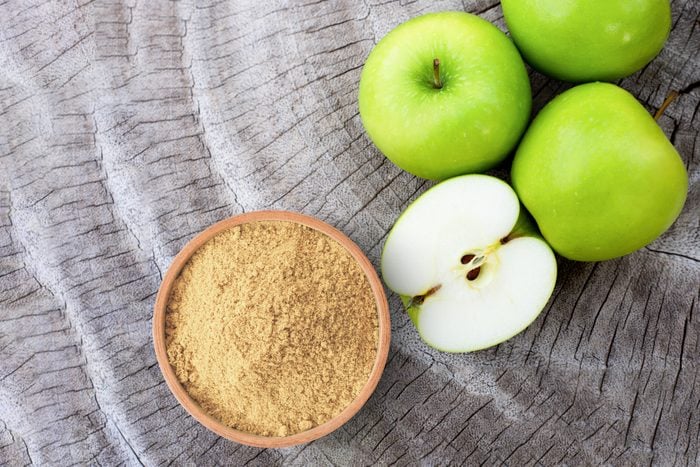What Is Pectin and How Do You Use It?
Updated: Jun. 28, 2023

Pectin puts the wobble in jellies and jams. Here's what it's made from and how to cook with pectin.
If you’ve ever read a recipe for homemade jam—or studied the ingredients list on a jar of jelly at the store—you’ve probably heard of pectin. It’s essential to preserves, helping them to “set,” or form the unctuous gel-like texture. But what is pectin, exactly? Where do you find it? And is it good for you? Here’s the deal.
What Is Pectin?
Pectin is a soluble gelatinous polysaccharide—in simple terms, a soluble fiber found in plants. When combined with sugar, acid and heat, pectin has a gelatinizing effect, thickening and solidifying liquids. Think of cooking fruit on the stove with a sprinkle sugar, for instance. The longer it bubbles, the thicker the juice sets. That’s pectin at work! Most fruits and vegetables contain pectin.
Types of Pectin
Pectin is found both in natural sources (e.g. fruits and vegetables) and in commercially produced form. Store-bought pectin includes powdered and liquid options, as well as instant and low-sugar. Most store-bought pectins are derived from a naturally high sources of pectin: citrus rinds.
It’s best to use whichever type of pectin your recipe calls for, as it will affect the quantity of sugar, cook time and other factors.
Choosing the Right Pectin for Your Recipe
Some high-pectin fruits don’t need added pectin to gel. This includes apples, quince, cranberries, grapes and citrus. (Think of easy cranberry sauce for Thanksgiving dinner, or the super-gelled wiggle of citrus marmalade.)
Low pectin fruits like pears and strawberries need extra help to thicken and gel. Some recipes call for adding high-pectin fruits to help them set—by stirring orange peels and seeds into rhubarb jam, for example. But many home preservers reach for store-bought pectin instead, relying on its consistent results and ease.
Store-bought pectin often sets more quickly, reducing the time it takes to simmer a jam or jelly. (As a bonus, the fruit preserves taste fresher, too.) Many reduced-sugar recipes call for store-bought pectin: since sugar acts as a thickening agent in many preserves recipes, adding pectin helps gel the fruit with less sweetener.
What Is Pectin Used For?
Pectin is most commonly used in cooking jams, jellies and other preserves. It’s also used to make gummy candies, and as a stabilizing ingredient in commercial cooking and baking.
Here’s the difference between jams, jellies and preserves, if you’re not quite sure.
Pectin vs. Gelatin
Both pectin and gelatin are thickening, stabilizing ingredients often used in cooking and baking. Fruit-derived pectin is vegan-friendly. Gelatin is a protein derived from collagen, usually from animal sources, which means it is not vegan or vegetarian. Because pectin requires sugar and acid to set, it’s mainly used in sweet recipes, while gelatin is commonly found in savory foods or foods that don’t require cooking, like these rainbow candies.
How to Use Pectin
If you’re just starting to cook with pectin, try an easy jam recipe, like this favorite strawberry jam. Since strawberries are a low-pectin fruit, the added packet of pectin helps to thicken the fruit in minutes. Cherry jam and blueberry jam also benefit from added pectin. Adding store-bought pectin can even help to gel and set an unconventional ingredient, such as champagne jelly or sweet, mild corncob jelly.
